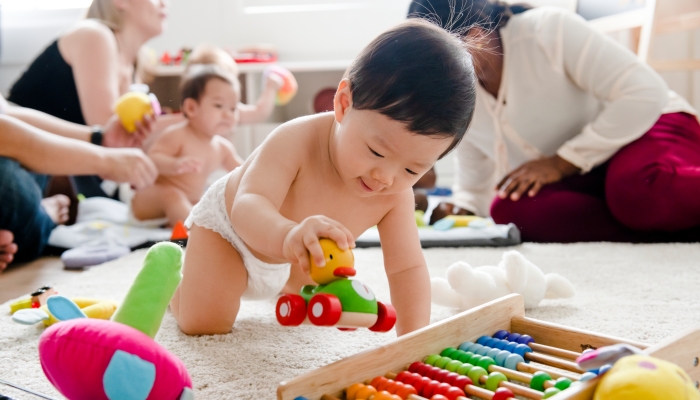Toys play a big role in a baby’s development — they help with motor skills, curiosity, and even emotional comfort. But to make sure they’re truly helpful (and not harmful), toy safety should always come first. Here are five practical ways to ensure your baby’s toys stay safe, clean, and ready for play.
1. Choose age-appropriate and non-toxic toys
Always check the recommended age on toy packaging before buying. These guidelines exist for safety reasons — especially to prevent choking hazards. Toys for babies under 1 year old should be large enough not to fit fully in their mouths and shouldn’t have any detachable small parts. Also, pay attention to the materials. Go for toys labeled BPA-free, phthalate-free, or made with food-grade silicone. Wooden toys should use baby-safe paint and smooth finishes. Avoid anything with strong smells or cheap plastic, as these could indicate harmful chemicals.
2. Clean toys regularly
Since babies often put toys in their mouths, regular cleaning is key to keeping them safe. For plastic or rubber toys, wash them with mild soap and warm water. Some can be wiped down with baby-safe disinfectant wipes. Plush toys should be washed in the machine using a gentle cycle and baby-safe detergent, then air-dried completely. Bath toys need extra attention — squeeze out water after every use and let them dry fully to prevent mold from growing inside.
3. Check for damage or loose parts
Even the best-quality toy can wear out over time. Make it a habit to inspect toys regularly for signs of damage. Look out for loose buttons, cracked plastic, exposed stuffing, or weak stitching. These small issues can turn into choking or safety hazards if ignored.If something looks broken or unsafe, it’s better to retire it and replace it with something new — especially if your baby is still mouthing everything.
4. Store toys in a clean, dry space
Proper storage helps keep toys hygienic and prevents mold or dust buildup. Use baskets or bins that are easy to clean and place them in a dry area of your home. Avoid damp corners or high shelves where toys could fall and hurt your child.For bath toys, always keep them in a breathable mesh bag or draining container to avoid mold buildup from water that gets trapped inside.
5. Supervise playtime and rotate toys often
Even the safest toy still needs supervision — especially for younger babies. Stay close while your baby plays to make sure everything is being used the right way. Also, rotating toys regularly helps keep playtime fresh and lets you check toys in storage for damage or cleanliness. Fewer toys out at once also means less mess and easier cleaning.
Keep Playtime Safe and Worry-Free
Keeping toys safe doesn’t have to be complicated — just a few smart habits can make a big difference.
















